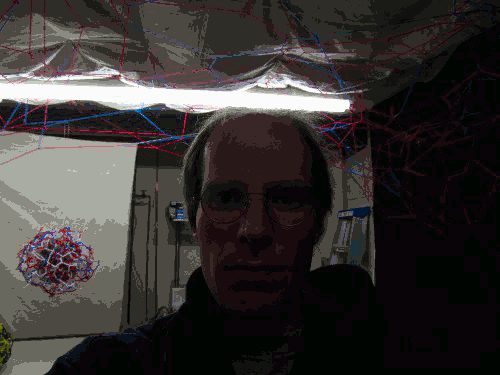2011,07,09 – Nuit Blanche North, Huntsville
This is the finished work – a ‘rendering’ made with bond paper strips attached to the wall using packing tape and illuminated by black light. It was situated in the foyer of the Algonquin Theatre. One application of the NETTT.
Excerpt from Nuit Blanche North Proposal:
The Dissolution of Reality
‘What we are today comes from out thoughts of yesterday, and our present thoughts build our life of tomorrow: our life is the creation of the mind.’
-first line of the Dhammapada
The world as a 3-D rendering.
I plan on using masking tape 1 and black lights to create a 3-D ‘rendering’ of a local site. The tape lines duplicate the way that computer generated (CG) models of 3-D objects are formed by breaking up all surfaces into a triangle mesh (called tessellation or triangulation – this is a technique used to make efficient use of computer resources).
What we perceive as reality is just an illusion.
In computer graphics, 3-D objects are usually constructed from wireframe models – this is the essential skeletal structure of any object. Lighting, effects, surface texture, colour, etc. are then added to the models to elaborate the scene. So often the case in the computer graphics field, much emphasis is given to making things look realistic – as ‘life like’ as possible. For much of the CG field, this has been a primary ambition. This is no surprise, as the western world has for so long been centered around materialism – the objective proof in science, realism in art – physical evidence as the only aspect of reality that can be absolutely trusted.
Mind-boggling levels of detail and incomprehensible amounts of technical and mathematical sophistication are used to develop the images in today’s CG films. These technologies are used to render, for example, water flowing in a convincing way, or deceptively real hair and fur. What is being done, is the mathematical modelling of the world – using the laws of physics translated into code to render 3-D interactions. The amount of work that goes into satisfying this ambition for capturing realism is astonishing. Many people, with phds and doctorates in computer science, mathematics, and many other fields working in enormous companies (I am thinking of Pixar as a prime example) all working together to make more convincing CG renderings of leaves and balloons and eerie vacant facial expressions (CG faces, especially the eyes, quite tellingly, often appear completely void of any living presence – frozen).
Of course it can all only ever be a simulation. Offhand, I would say it is a huge distraction. When I was young, I was hungry for cool special effects (eg. Star Wars) – but it all gets tiresome and empty very quickly. I am really specifically referring to the use of CG for entertainment, aesthetic, and artistic work motivated by the search for the ‘ultimate in realism’. In other fields such as aircraft simulation, engineering, and medicine, the search for realism has a practical purpose. CG realism is a metafake world – a simulation of a simulation. The world that is captured is itself just a simulation (and yes, I have seen the Matrix).
‘VIRUS’ implies this unreality of reality by making it look as if the surfaces of objects are being dissolved by an unknown virus. It is erasing all the surface effects such as lighting, colour, and texture that give all objects their real-like appearance. A small inexplicable error – a bit flipped by wandering cosmic rays, or some collision of incompatible stray sentiments has converged on a point in space and triggered a cascade failure, initiating the creation of a virus which is slowly dissolving the visible, tangible world, revealing that underneath, it is all just a simulation.
OK so now what?
- Initially I did the proposal with a roll of masking tape I had in my possession. It glowed in black light, so what an easy way to implement this idea. I searched everywhere and could not find another roll that was black light reactive so I had to use bond paper. I guess I had to the last roll on earth that glowed under black light. ↩
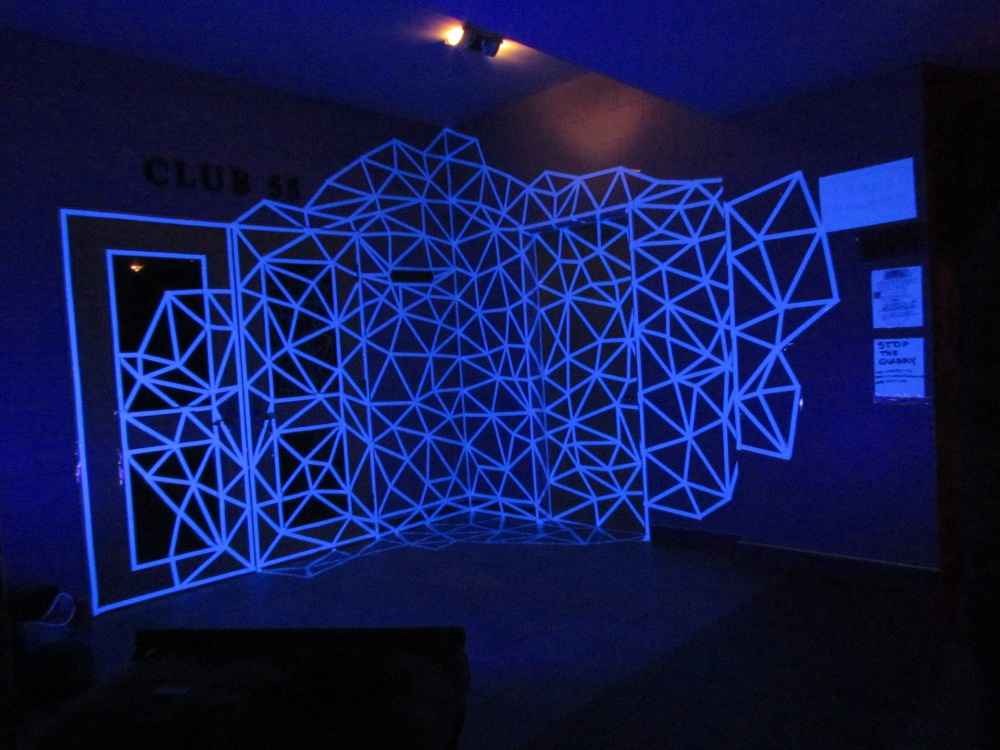
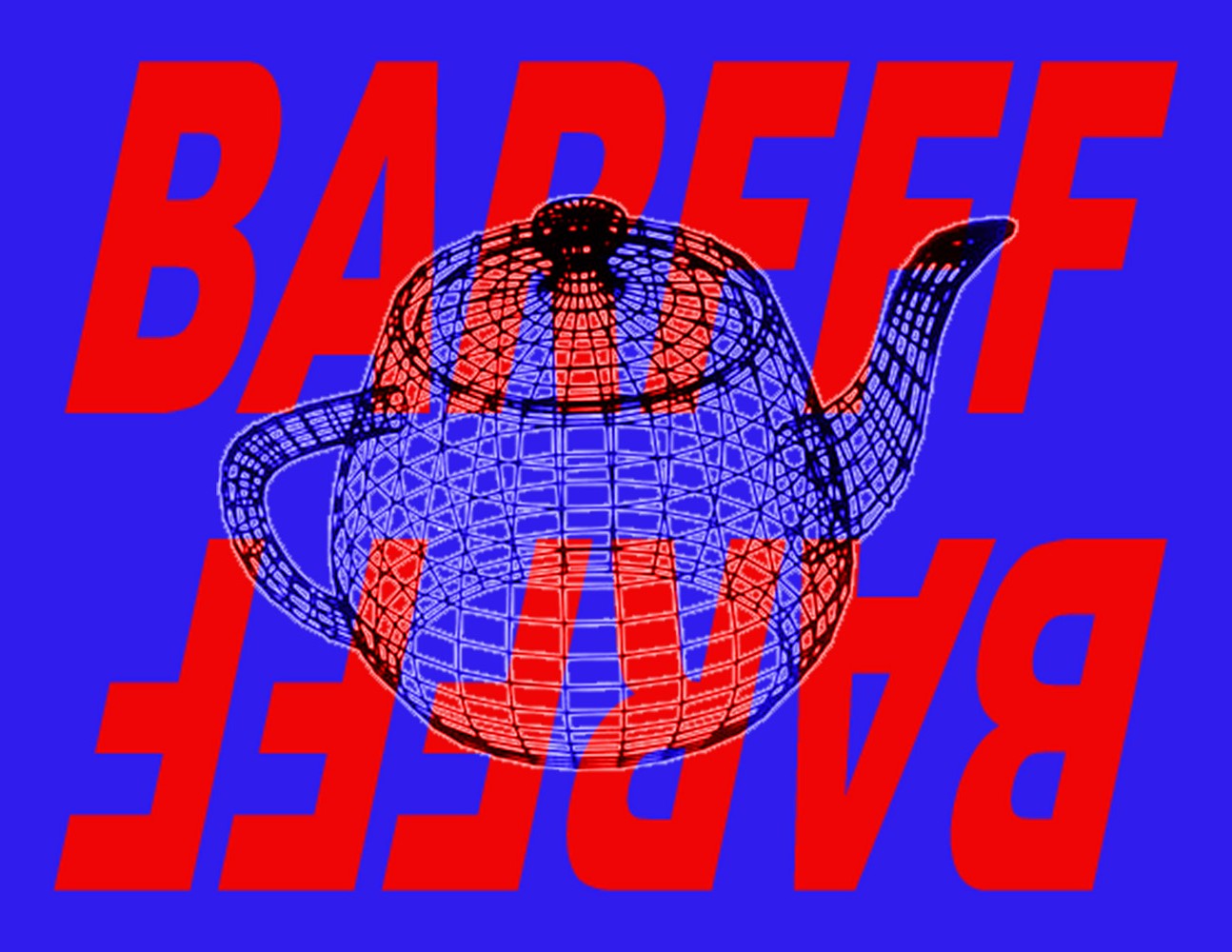

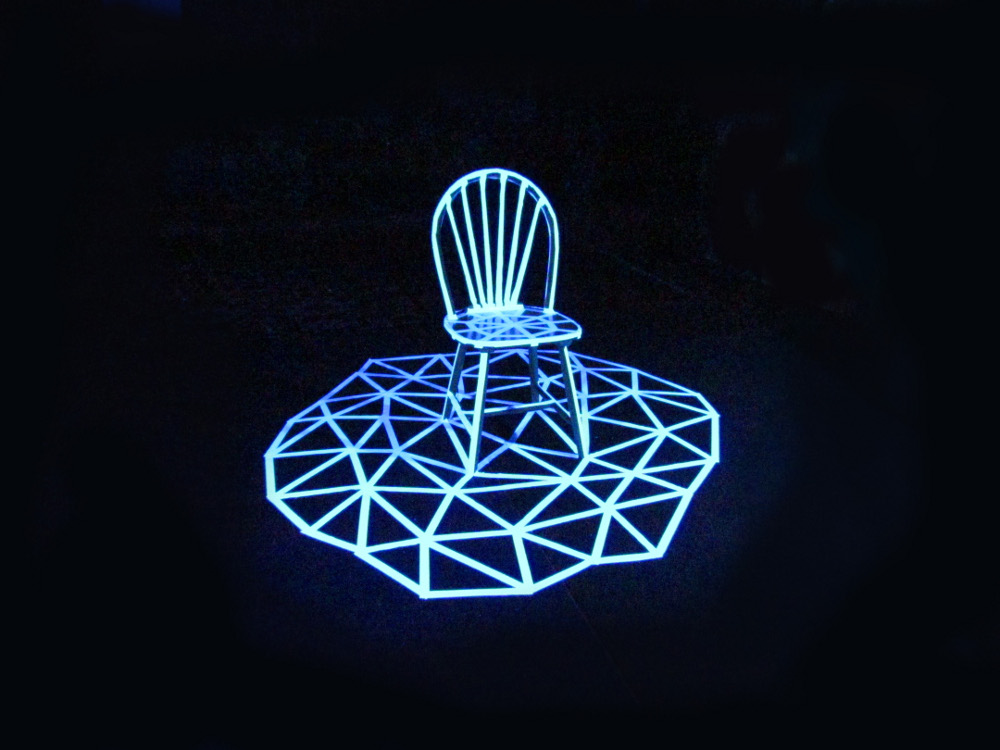
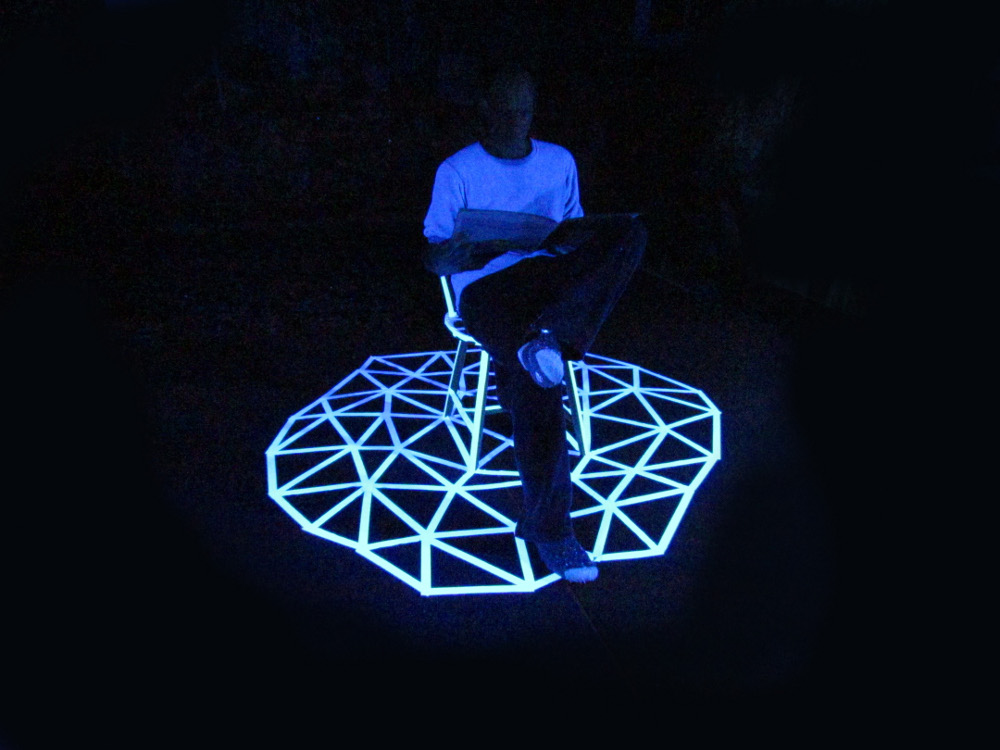
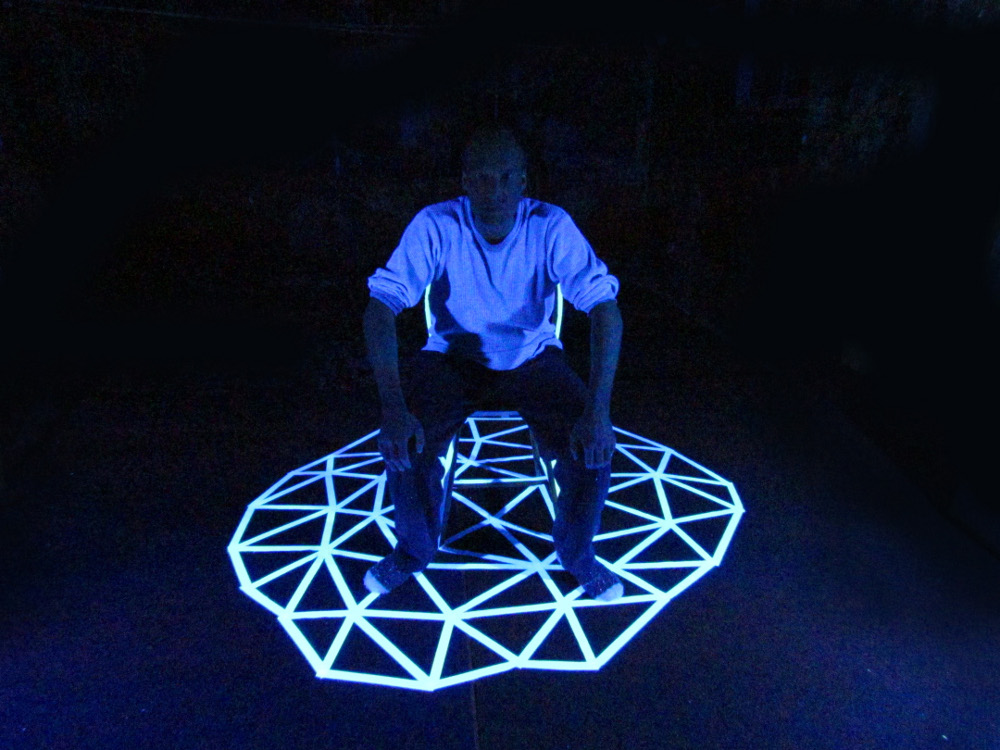
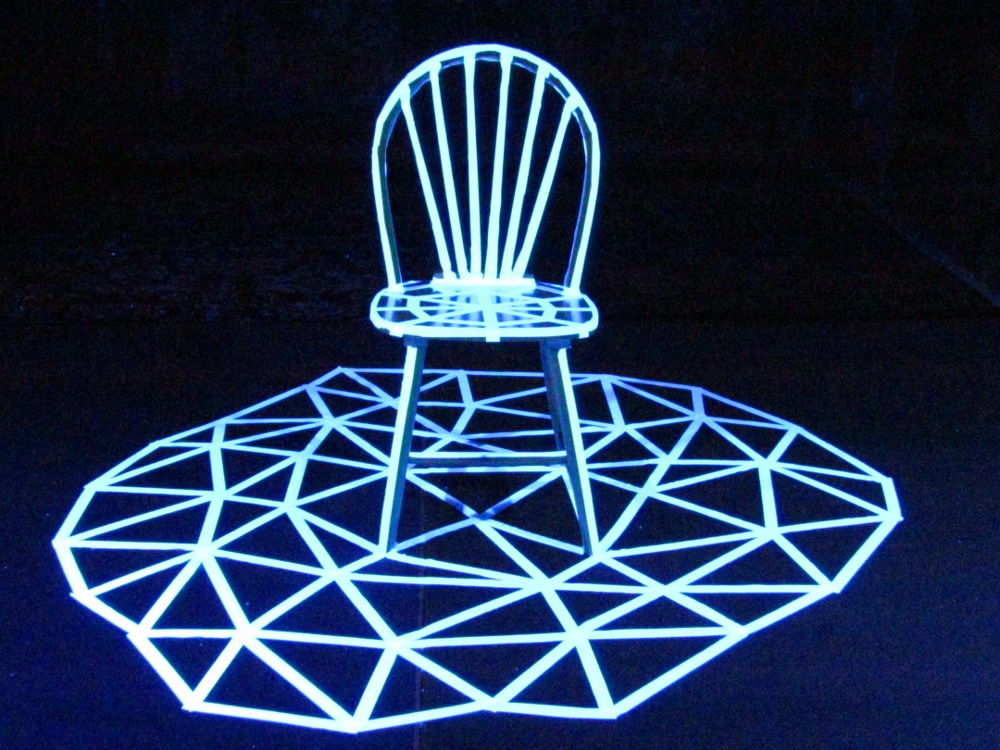
![01 - [flattened] - (2011,04,15) Artist's Statement](https://robgillthings.net/wp-content/uploads/2012/09/01-flattened-20110415.jpg)
